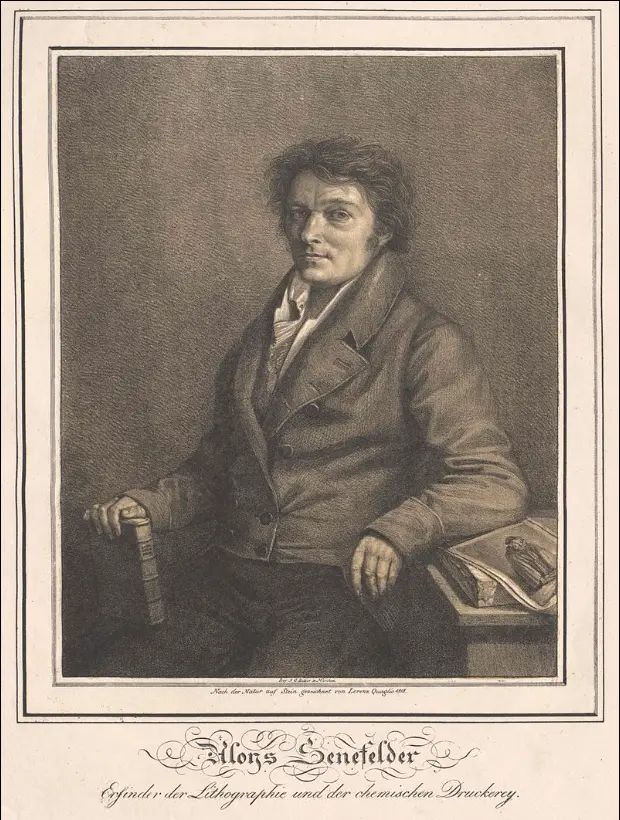How Has Printing Technology Affected Graphic Design and Branding?
Typography is the craft of endowing human language with a durable visual form. – Robert Bringhurst
Technology has historically been an agent of change. Throughout the relatively short history of graphic design, new technology has spurred and fostered writings and ideas to spread farther and faster than previously thought possible. Each great, innovative designer or engineer has studied the past in order to improve upon what has come before. In this blog post, we will specifically focus on the technological development of printing and how it has affected the evolution of graphic design and branding.
1450: Johannes Gensfleisch zur Laden zum Gutenberg – The Printing Press

Johannes Gutenberg was German-born and trained as a blacksmith and goldsmith. He was very comfortable with creating his own tools and refining his process. This allowed him to create and experiment with the first mechanical movable type printing press system, first in 1450. He also developed oil-based ink needed as part of the printing system. The printing press sparked the printing revolution and is regarded as the beginning of modern mass communication. The availability of information to the general public shook up the status quo and helped shift some of the power back into the people’s hands. Business owners could have their brand printed on many flyers, allowing their identity to be more consistent and widely recognized. Graphic design now had the ability to spread using quickly moveable type over the arduous, expensive task of hand lettering. The printing press changed everything.
1790: Alois Senefelder – Lithography

The next big step in graphic design that is important to note is the development of Lithography. In 1790 Alois Senefelder, German actor and playwright, developed a new technique of transferring oil-based ink from a stone, later a metal plate, onto paper. This is accomplished by etching areas into the stone, then moistening the stone to retain water in the etched areas. The ink is then applied and repelled by the water, sticking only to the original drawing. The ink would then be transferred onto a sheet of paper. This process allowed complex images to be printed on multiple sheets of paper quickly and at a fraction of the cost. Graphic designers could now quickly and affordably reproduce text and images.
1875: Robert Barclay and Ira Washington Rubel – Offset printing
Offset printing was developed over the course of 29 years by Robert Barclay and Ira Washington Rubel. Barclay, an Englishman, developed an offset press that worked for printing on tin in 1875. Then, in 1904 Rubel, an American, reworked the offset press to print on paper. Offset printing is a sped-up version of Lithography and it made the mass production of printed works extremely fast and economical. Offset printing is best suited for economically producing large volumes of high-quality prints in a manner that requires little maintenance. Graphic designers could now print thousands of pieces of paper that looked almost identical. Consistency across printed work became effortless for large scale production.
1884: Ottmar Mergenthaler – The Linotype Machine
What if you didn’t need to manually set type when printing? Ottmar Mergenthaler was a German inventor who asked this question when developing his Linotype Machine. A 90-character keyboard types words and assembles matrices, which are molds for the letterforms, in a line (hence the name Linotype). The assembled line is then cast as a single piece, called a slug. Once the line is utilized, the metal material is then returned to the machine and stored for further usage or, if not needed, the slug is then melted down. This allowed for much faster typesetting than Gutenberg’s printing press.
1950s – 1970s: Canon, Hewlett-Packard (HP), and Epson – Inkjet printing
With the advent of computers, printing became even more widespread, personal, and available within one’s own home. As the personal computer became more popular, so did printers. Canon, Hewlett-Packard (HP), and Epson pioneered at-home inkjet printing. This method of printing creates text by propelling droplets of ink onto the media material. By the 1970s inkjet printers could actually reproduce digital images that were generated by computers. People, for the first time in history, could print something off a computer in their very own home. This made the computer a tool for graphic designers who did not have access to large scale printers. Also, this made branding a more personal exercise and now everyone could print something they made using this graphic design technology.
1980: David Coons and Graham Nash – Digital printing

Digital printing consists of large-scale/high-volume laser or inkjet printers used for small-run jobs from desktop publishing or other digital sources. Developed by David Coons and Graham Nash, digital printing was to be an alternative to costly offset printing. This type of printing is best suited for individuals that want to print a large quantity job, but don’t want to print as much as an offset printer would need to make the job feasible. Digital printing has a higher cost per page, but that price is made more economical due to not having to create printing plates. This allows graphic designers access to on-demand printing, a short turnaround time, and a more flexible process for revisions. A designer could now print their project, book, brand, or whatever they wanted, quickly, at a mid-to-high volume, and for more affordable prices.
Mid-1980s – 2000s: The Internet
While not a printing technique or process, the internet is a tool that has changed graphic designers possibly as much as the printing press. Instead of waiting days for proofs to come through the mail, now they can be emailed immediately. Need to know what color, material, typeface, or other important information? That question now only takes a minute to look up. The internet is the biggest informational tool available to anyone with access. The internet has given freedom to an individual graphic designer to brand and identify themselves in whatever way they see fit. Beginning in the mid-1980s and extending to now, the internet has evolved and continues to evolve into something we are still just now trying to understand.
If you are seeking a strategic design partner, let’s talk: 602.381.0304 or dduke@catapultu.com.
